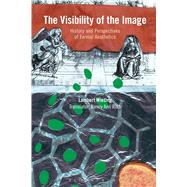The Visibility of the Image History and Perspectives of Formal Aesthetics
, by Wiesing, Lambert; Roth, Nancy Ann- ISBN: 9781474232647 | 1474232647
- Cover: Hardcover
- Copyright: 9/22/2016
Now available in English for the first time, The Visibility of the Image explores the development of an influential aesthetic tradition through the work of six figures. Analysing their contribution to the progress of formal aesthetics, from its origins in Germany in the 1880s to semiotic interpretations in America a century later, the six chapters cover:
Robert Zimmermann (1824-1898), the first to separate aesthetics and metaphysics and approach aesthetics along the lines of formal logic, providing a purely syntactic way of using signs, regardless of objective content;
Alois Riegl (1858-1905), who went on to further develop aesthetics on the model of formal logic, creating a theory of style in response to Zimmermann's call for an aesthetics oriented toward formal logic;
Heinrich Wölfflin (1864-1945), who represents a step toward an understanding of consciousness by using pictures as cognitive tools;
Konrad Fiedler (1841-1895), the Saxon philosopher who considered the possibility that some kinds of images are made and viewed not for what they show, but for their visibility's sake alone;
Maurice Merleau-Ponty (1908-1961), responsible for taking up the connections between the problems of reducing the range of potential meanings and contexts of a given image down to just the picture surface;
Charles William Morris (1901-1979), who set out to establish whether a picture with no objective reference, such as an abstract painting, still counts as a sign, and if so, in what sense.
Bringing these thinkers together and interlinking their ideas, Lambert Wiesing presents an engaging history of formal aesthetics, while reconstructing the philosophical foundations for the appearance of new image forms in the 20th century, including the video-clip, abstract collage, digital simulation and virtual reality. Using this original approach, The Visibility of the Image introduces the rise of modern image theory and provides a valuable account of our engagement with pictures in the 21st century.






